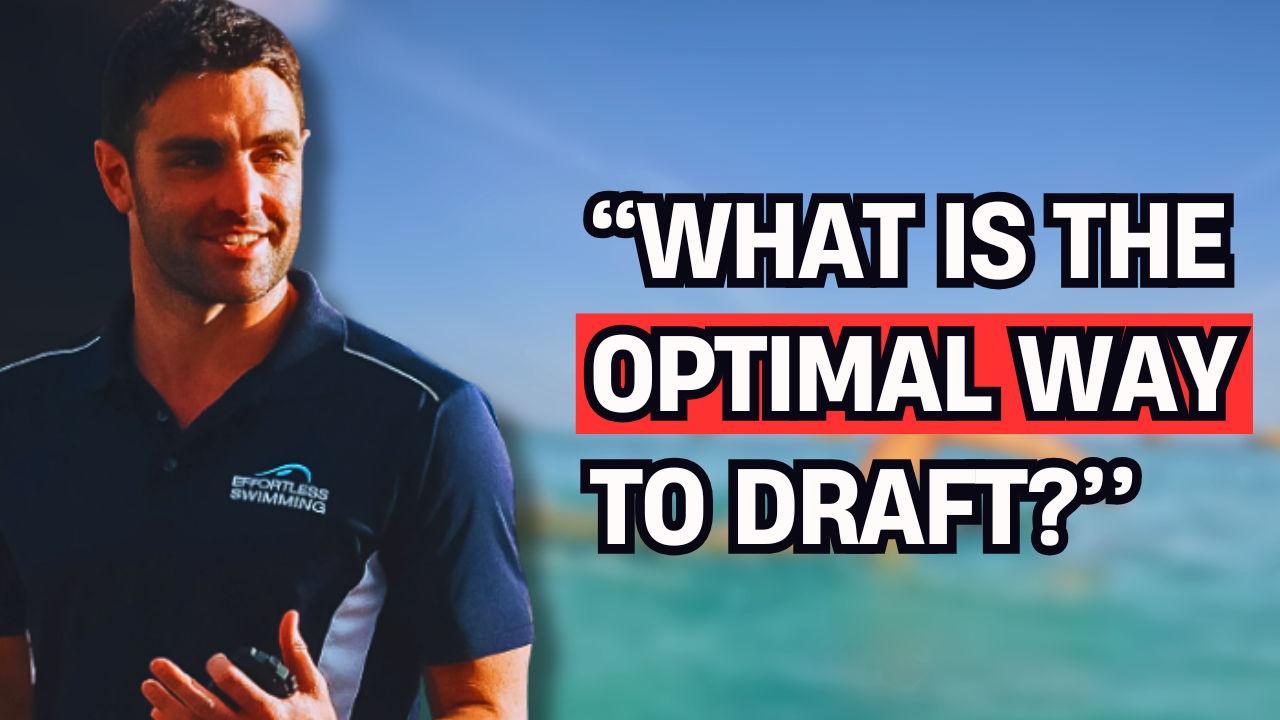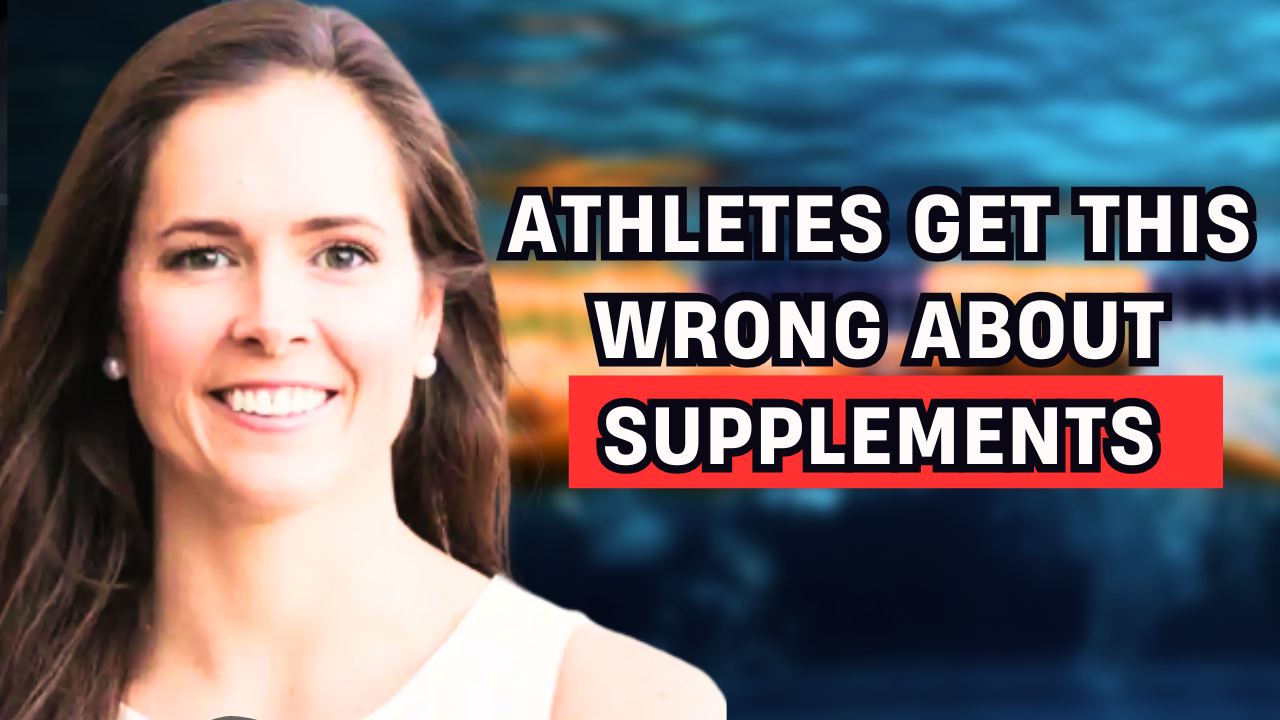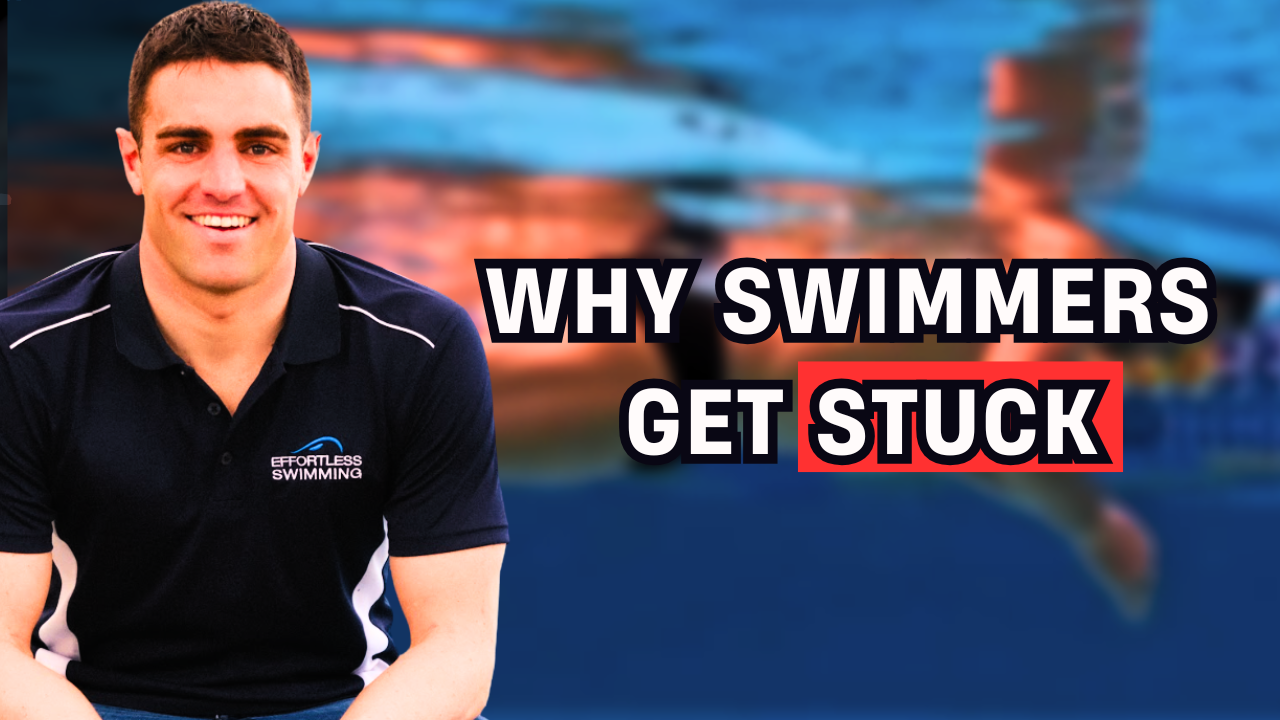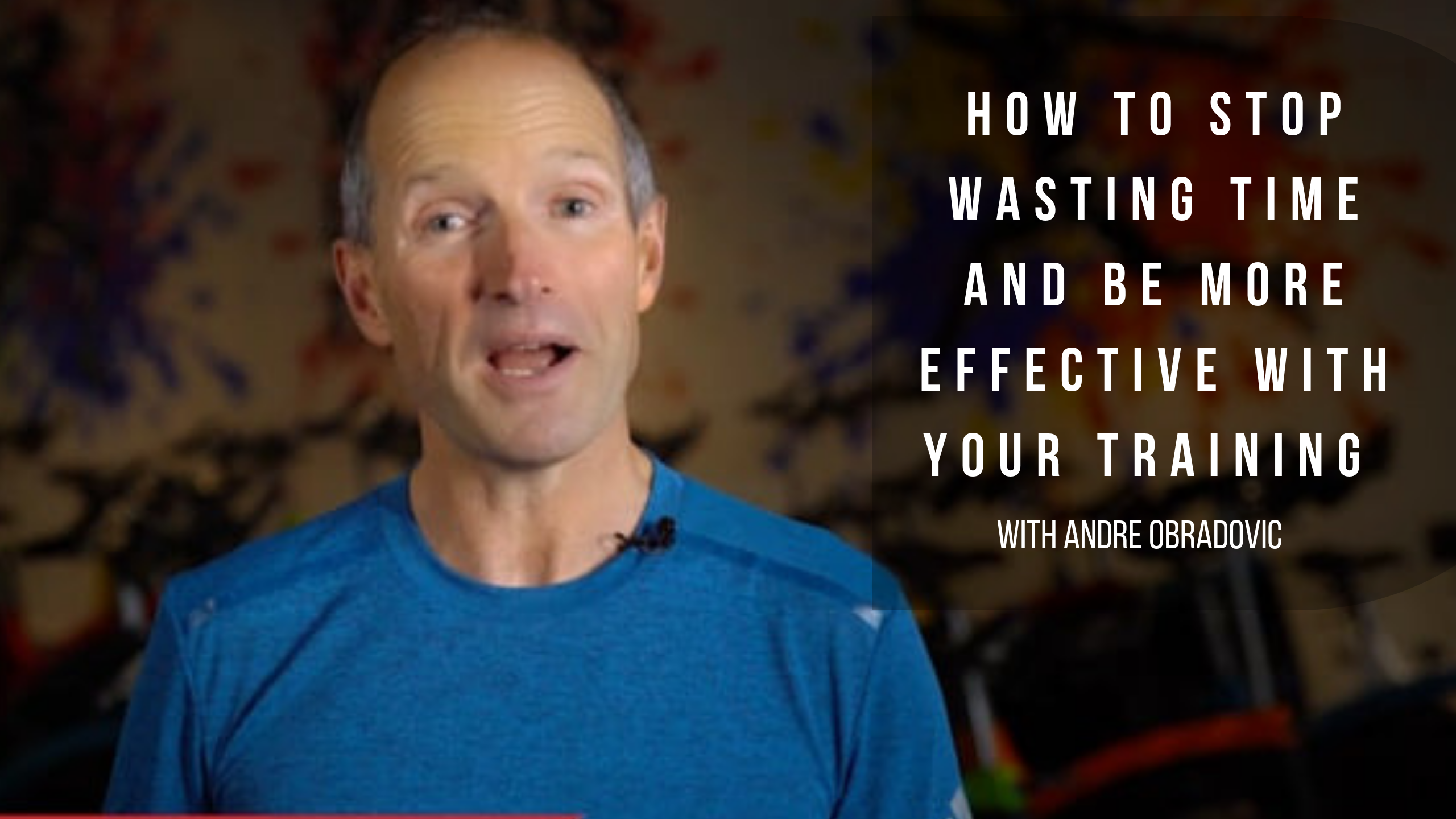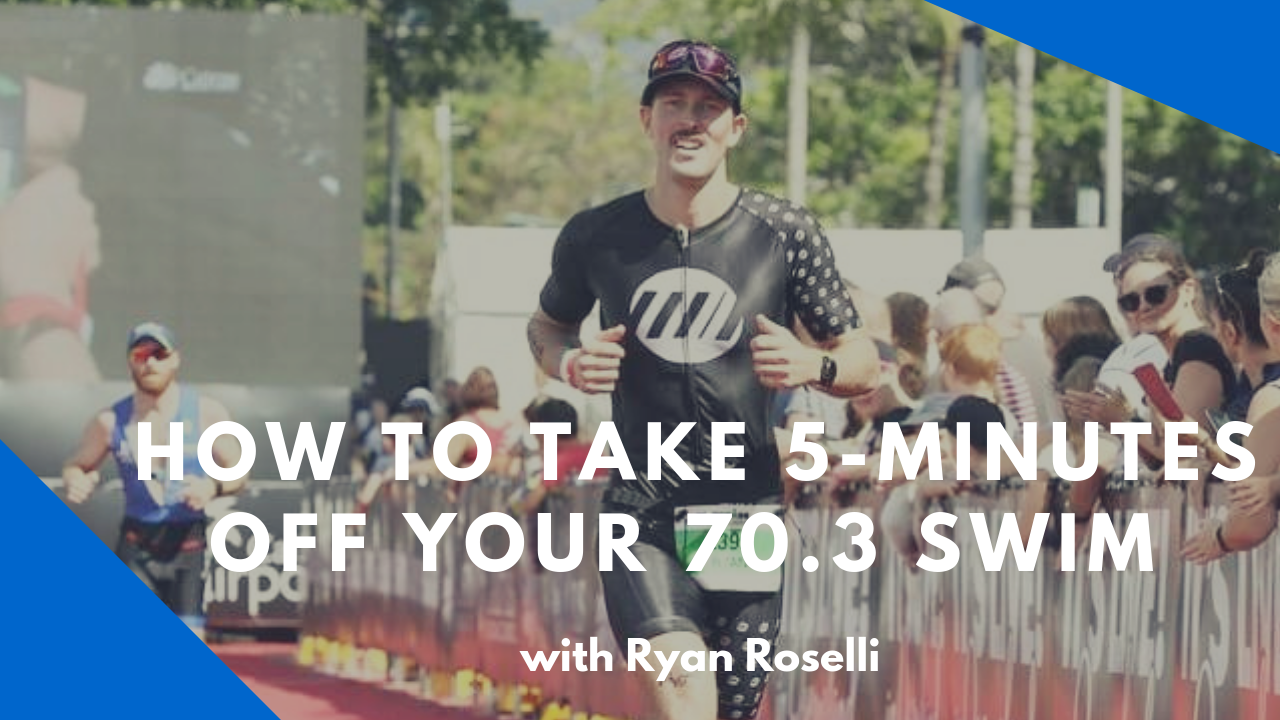Trever Gray is an HRV based coach who works with Olympians and amateurs, ensuring athletes are adapting to training stimuli optimally. He is also a professor of anatomy & physiology and nutrition at Tacoma Community College.
Join us as we talk about Heart Rate Variability, Respiratory Muscle Training and Blood Flow Restriction Training.
00:59 Trever Gray Introduction
02:22 What is Heart Rate Variability?
04:01 How do you measure HRV?
05:20 Overtraining or Undertraining
06:27 Using HRV Data in Training
08:17 Skepticism from Coaches
08:59 Managing HRV Data as a Coach
11:16 Is it for Everybody?
13:32 Respiratory Muscle Training
14:39 Breathing Exercise to Strengthen Respiratory Muscles
20:29 Breathing Exercises During Downtime
21:02 Blood Flow Restriction Training
23:57 How Often Can You Use BFRT?
25:25 How Safe is BFRT?
More about Trever Gray:
Website:
https://www.streamlinedswimcoaching.com/
Facebook:
Streamlined Coaching
Instagram: streamlinedcoaching
Transcription:
Brenton: Welcome to the Effortless Swimming Podcast. My guest today is Trever… We’ll start that again. Hang on.
Brenton: Welcome to the Effortless Swimming Podcast. My guest today is Trever Gray, and Trever is based in Tacoma, Washington, and he’s got a number of years of coaching experience under his belt, but he’s also a professor in a number of things, and I’ll let you talk a little bit more about that Trever, but I’ve got you on the podcast today to talk about really three key things. The first one being heart rate variability and how you can use that to know when to be able to push yourself in training and when to back off. We’re going to talk about how to breathe properly and how to train yourself, how you can improve your swimming performance using respiratory muscle training. And we’re also going to talk about blood flow restriction training. So Trever, welcome to the podcast.
Trever Gray: Brenton, thank you very much for having me. It’s good talking with you.
Brenton: So you have coached swimming for quite a number of years, but now, you’re a professor in a number of things. So can you talk a little bit about that and your background and I guess kind of what gives you the credibility to talk about all this stuff that we’re about to talk about?
Trever Gray: Yeah. Well first, I’ve been there. I’ve done swimming, and I’ve done a triathlon. Not that those who haven’t done the sport can’t coach, but I think it just gives you a level of understanding and connection to the athlete that perhaps they couldn’t think about or perhaps they couldn’t connect to the athlete with. So I’d like to think I have this well-rounded picture of what the athlete is going through, not only by doing it but then going back in older age and learning the science about it.
Trever Gray: And so, yeah. I’m a professor of anatomy and physiology and nutrition at Tacoma Community College. I just started doing that. I’ve been there a couple quarters now. And then I’m still having my finger in the coaching pool. I’m not coaching full time right now, but I am monitoring the physiological adaptation to training through heart rate variability with a number of amateur and professional athletes.
Brenton: Let’s go straight into the heart rate variability. So I’ve talked a little bit about it with another guest on the podcast, probably 12 or 18 months ago. For those that have maybe heard the term but don’t know exactly what it is, how would you sort of sum it up to people?
Trever Gray: So stress is cumulative. Every day we have symptoms of eustress and distress. And eustress is good stress, and distress of course is bad stress. And the brain doesn’t particularly know what the difference is in terms of distress. So if we’re having an argument with our significant other, and we’re training, and we are late for work, and we have traffic, that is cumulative, and that shows up in the expression of the sympathetic or parasympathetic nervous system that comprises our autonomic nervous system.
Trever Gray: And when we have too much stress, too much sympathetic tone, that can be measured through heart rate variability and what it is if you measure in a QRS wave. When we see those medical shows or movies, and people are hooked up, and you see the beep, beep, beep, beep, we can measure the time domain between the peaks of the R part of the wave, and then we collect data on that and do a bunch of number crunching, and that has been associated with your sympathetic and parasympathetic nervous system. And so I can literally monitor the accumulative stress of athletes and people who don’t work out to make sure they’re positively adapting to the training.
Brenton: And how would someone go about taking this measurement?
Trever Gray: Well, it’s free. You could do it on your own. I mean, you’ve got to buy, couple of bucks for an app. It does take someone, in my opinion, with experience and training under it to really interpret the data. But there are a number of companies out there that can take heart rate variability. The wearables have not been validated yet in terms of measurement. I know the Oura ring… I think the Oura ring, is that how you pronounce it?
Brenton: Yeah.
Trever Gray: I think that one has been validated. I’m not aware of any other full-time 24-hour wearable has been validated. You can use a chest strap to measure heart rate variability, and then, of course, it has been validated to take a measurement on your smartphone through the camera. That has been validated against the gold standard, which is in the laboratory, measuring heart rate variability.
Trever Gray: And traditionally, you do it upon first thing waking in the morning. Your sympathetic nervous system will suppress itself during sleep ideally. And then right when you wake up, it will present itself, and the level of presentation of your sympathetic nervous system can give you a window into whether you’re over-training or not.
Brenton: And is it a sign as well of… Let’s say someone’s training three times a week, and it’s all pretty steady. Is it also going to show whether there may be stress from work or something else and that stress is getting to them so that they might be best to take that session easier? Is it a sign of both, all of those different types of things, or is it just over-training or whether you’re coping with it?
Trever Gray: No, actually under-training as well. So yes, it will show you whether you need to take an easy workout or an easy day. It tells you whether your physiology is ready to accept hard training or not. And if on a particular day, if it’s ready to accept the hard training, then yes, you would proceed as normal. You wouldn’t do the hard workout or even change it up.
Trever Gray: When I had a recovery day, my physiology suggests that I’m ready for hard training. Let’s go hard today. And so you can change it up. Or you can say, “Hey, you know what? My physiology is not ready to take on this workout. I’m going to take it easy today.” So it can tell you if you’re over- or under-training.
Brenton: So you’re working with a number of athletes and some very high-level athletes as well. What app are they using? How are they taking that data, and how are they working with their coach and you to use that data with their training?
Trever Gray: So I use the HRV for training platform developed by Dr. Marco Altini. I’m pretty sure he’s Italian. And he is constantly updating the app with what science has shown to be improvements in the app. Then he’ll adapt that to the app. And I find that app the easiest and most validated way to use HRV measurements.
Trever Gray: And so what I do is I have a list of all my athletes, and I will see who’s adapting positively and who’s adapting negatively. And if an athlete is adapting negatively, for example, I usually actually email or text, usually through text, an athlete almost every day. One athlete, I work with likes to know, hey, how am I doing? I feel fine, but how am I doing? I give him the reinforcement, which he really likes. And then on days where he’s not adapting, he will go to his coach and say, “Hey, my physiologist is suggesting that I need a little bit of rest.” And what’s the great part about it, is the coach listens to that, and we’ll adjust.
Trever Gray: And now going into world championships is coming up here, and going into world championships, he says he’s never been more ready for a big meet coming up than he ever… Or he’s more ready for the big meet than he ever has coming up. Usually, at this time of year, he’s beaten down. He cannot wait for taper, and he just wants to rest and get ready for the meet. But now he’s going into his taper with a fresh body and a fresh mind.
Brenton: Have you ever seen any pushback from coaches on it, or are you finding it’s becoming much more widely accepted from coaches looking at the heart rate variability?
Trever Gray: There’s definitely some skepticism about it. I mean, this is a relatively new technology. Last 10 years, it’s been developed to a point where we can take it every day at the consumer level and not in the laboratory. And so there’s some skepticism, but once they… They’ll say, “Okay, let’s give it a try.” And they see that it works. They see the benefits of it. And then they kind of eat it up, and they’re like, “Well, why aren’t all my athletes on this?” And so that’s kind of the stage that we’re at now is expanding upon the technology because it seems to be very beneficial.
Brenton: And from your end, how do you check how your athletes are doing? Does the app have a way for you to be able to get those results of your athletes?
Trever Gray: Yeah. So the app, any athlete, any consumer athlete, can get a daily piece of advice, and then they could follow that or not. And by the way, heart rate variability is not 100% accurate. The human body is highly variable, and it’s extremely complex. If you get a measurement during a day, that does not mean that, oh, no, I’m falling into over-training. I better stop training. No, that’s not what that means at all. It means that over the long term, and what we do is we look at the long term. We look at the longterm trends of your heart rate variability and then make educated guesses based off that. So actually, I’m sorry, I don’t know if I answered that question or not. What was the question?
Brenton: So have you got away as the athletes or physiologist to be able to receive all of that heart rate variability data from say 20 different athletes, and you’re able to just sort of keep on top of it. Is that how you manage it? Is there something set up through the app that you can receive all that information?
Trever Gray: So the app has a simplified view of your daily readings. And then the pro version, which I’m using the coaching version, I get additional insights into their physiology because you also ask a questionnaire both based on objective and subjective data. And then those are correlated with HRV. And then I could dig really deep in the data and make a guess on something, for example, sickness.
Trever Gray: So the same athlete I was talking about earlier, he had no change in training, no travel, there was nothing in his life that changed the stress except he had some dips in his heart rate variability. And I thought that was maybe a sign of him getting sick. I said, “Hey, do whatever you need to do, get some extra rest. Make sure nutrition spot on to not get sick.” And two days later, his HRV spiked back up. Now, whether he was really coming down with something or not, I don’t know. But we did take some precautionary measures, and it did seem… He didn’t get sick. So in my view, I could see additional information that allows me to make decisions like that.
Brenton: And for say the person who’s swimming a couple of times a week, whether they’re doing swimming or triathlon… Yeah, obviously triathlon there’s a bit more of a risk of over-training if you’re doing sort of half or full distance IRONMAN events. What sort of levels do you think someone should be at to be taking this stuff pretty seriously or looking at it? Is there sort of a minimum requirement, or do you think that everyone should be using it?
Trever Gray: Not only triathletes and swimmers but every athlete in every sport, in my opinion, should be using this, especially beginners because it’s so easy for beginners to jump into a new training program and overdo it. And then we get people who are injured or frustrated or… And beginners can accept different amounts of stress. So one beginner has to really ease into it. And some beginners, yeah, they could actually ramp up their exercise volume and intensity fairly quickly. And so in my opinion, we are still in the dark ages of coaching in every sport, and this HRV heart rate variability is the first insight into training adaptation that is noninvasive that we have. So yeah, in my opinion, every level, every sport should be using it, including kids.
Brenton: At what age do you feel like they should start using it?
Trever Gray: Soon as they’re doing three to four training a week, and they’re getting a little bit more serious so hopefully, 15 and over. I would hope that 12-year-olds aren’t that serious. But we both know in some sports, parents are having their 12-year-olds be serious.
Brenton: Yeah. Yeah. Gotcha. Absolutely. So heart rate variability is the first one. So HRV4Training, that’s the one that I’ve seen before, and I’ve got a good friend who’s a high-level coach, and he’s got a number of athletes on the Australian team. He does basically what you’re doing with a bunch of athletes. So he has all of his squad using that app every morning. They wake up. They get the HRV in the morning, and he can see that, and he can have a look and see whether or not they should be adjusting their training or not. There seems to be a big movement towards it, which is great.
Brenton: The next one is respiratory muscle training so basically breathing and how people can use this to enhance their performance in swimming. And I know that you’ve done a paper on this. I was sort of looking at that earlier. What are some of the things that have been proven to be beneficial in terms of respiratory muscle training for swimmers?
Trever Gray: Actually respiratory muscle training has been shown to be more beneficial for land-based athletes but swimmers as well. But the hydrostatic effects of being in the water have shown to improve respiratory muscle training. But we could still train the long muscles beyond what being in the pool does. And all respiratory muscle training is, it’s the same thing as just going in the weight room and lifting a weight for bicep curls. You’re training that muscle to improve its strength and resilience and to reduce injury rates in that muscle. Respiratory muscle training does the same thing. And you can’t put weights or dumbbells or plates on the breathing muscles, but we can do respiratory muscle training to have the same effect as being in the weight room.
Brenton: What’s one example of a type of breathing you can do to strengthen these muscles?
Trever Gray: Well, there are a number of apps out that you could just do some breathing exercises, number one, but respiratory muscle training provides resistance against the inhale and exhale, so you have to forcibly concentrate on trying harder to breathe. And these devices, you have to have a device to do it, have different levels. There are different settings so that you can increase the resistance you have on your lung, so that over time just like in the weight room, over time you can increase the strength of your lungs.
Trever Gray: And studies have shown that you get enhanced performance. One big one is the reduction of perceived exertion. So for a given level of effort, those who have done specifically inspiratory, which is the inhale muscle training, have lower levels of exertion at a given VO2 max.
Brenton: And so you’re asking about things like the PowerLung of…
Trever Gray: Mm-hmm (affirmative).
Brenton: Yeah, things like the PowerLung basically just, yeah, restricts the breathing. And is that more strengthening the diaphragm than anything else or a number of other muscles as well?
Trever Gray: So there are three muscles that work in breathing. Basically, yes, the diaphragm is one and then the intercostal muscles, the external and internal intercostal muscles, and inspiratory muscle training work the internal intercostals, the breathing muscles. But you can also work on the exhalation too. The problem with exhalation is you can get a little bit dizzy when doing that. When you have that drop in thoracic pressure, you can get dizzy. So really, respiratory muscle training consists of more inspiratory or inhalation muscle training.
Trever Gray: And yeah, PowerLung is one. I use the POWERbreathe and full disclosure, I am not sponsored by any company. I’m not sponsored by HRV4Training or POWERbreathe. I use these products willingly and freely. So yeah, I use the POWERbreathe. I think they’re out of the UK.
Brenton: Yeah, I remember, I think it was probably 10 years ago, I remember my dad bought one. He was my swimming coach back then and yeah, and we used to… I was bit younger then, so we just used it for a bit of fun but didn’t really have a training program around it. But it’s quite tiring. After one to two minutes, you’re starting to feel like, all right, I’m ready for a rest now. How long do you do it for?
Trever Gray: Well, and you can do it for one to two minutes, but the research was studying two modalities of using it, of use. One was for 30 minutes, which to me seems way too long. One that’s more applicable is twice a day for 30 breaths. So you would do 30 inhalations twice a day, morning and night, and that seems to improve performance in those who are using it compared to controlled groups. I’ve been using it for awhile now and not only does it seem to have me warm up for the day, it feels really good to, morning just wake up your lungs. And I’m on now onto 50 breaths. I’ve kind of increased the resistance, and I’ve done 50 breaths, so I’m experimenting with doing more breaths.
Trever Gray: And for those who do decide to use respiratory muscle training, start off with the recommended amount, which is just 30 breaths or 30 seconds, twice a day at a really low setting. And then you’ll know. And I think everyone, again, everyone should be doing it. All athletes use their lungs. So in my opinion, all athletes in every sport at every age should be doing respiratory muscle training to improve performance.
Brenton: One thing that I’ve found to be quite useful too without any devices is, so I was driving for 19 hours, this was about four weeks ago. I was going on a family holiday, so I had a lot of time to kill in the car. And so I was just doing some different breathing exercises, and one of them was, I was trying to see how long I could do the inhale for, so just a very long inhale, and I got up to 90 seconds so just 90 seconds off of an inhale. It took me a while to get there. But yeah, I sort of started out at about 45 seconds and then progressively get to a minute and then a minute 15 and eventually got to about a minute 30 on the last one.
Brenton: So I found doing that with this slow inhale, and then I make sure that I’m starting from down low so using the diaphragm, filling in through the belly, and then it sort of expands up to the lungs. And by the end of it, after 90 seconds, my chest is out, my stomach’s out, and it’s sort of as big as I can get. And I find that that expansion of the chest and the stomach, for whatever reason, when I was training for the next four weeks after doing these exercises quite a bit over the course of a few days, I just found that my output could be a lot, or I could sustain a much higher output without feeling like I was getting tired. So I was just a lot more in control of my breathing. So I found that that exercise alone was hugely beneficial.
Brenton: So it’s something I’m going to keep doing, more when I’m in the car because you can’t really do it day to day or in the workplace. It’s a bit weird. But yeah, just focusing on your breathing is a huge one that I think is often not considered too much, especially compared to your typical weight training or whatever it might be because it’s the thing that we all just do subconsciously, but we never really stop and think about our breathing and control it. And I think this respiratory muscle training, and even just intentional breathing and long inhales, long exhales, I find that stuff can be very, very useful.
Trever Gray: You’re absolutely right. And that’s really impressive, 90 seconds. And before we move on, you bring up a great point in that we do have downtime. Hopefully, we’re alone because you’re right, you can’t take the POWERbreathe at work or on transit. But when we do have downtime, or you can’t work out on a particular day for whatever reason, you can use these exercise modalities to compensate for the missed workout. You could do breath training, and you can do occlusion or blood flow restriction training, and you get at least some training effect on those when we have downtime when we’re commuting. That’s a great point.
Brenton: Let’s talk a bit about the blood flow restriction training. So the only reason I’m sort of aware of this is I’ve seen Michael Andrew, a swimmer in the U.S., post a few pictures about this, but I haven’t really looked too much into it. So what is it, and how does it benefit people?
Trever Gray: So there are four names to it, and they’re all basically the same. It was invented in the ’70s under the brand name Kaatsu, K, I think two A’s, A-A-T-S-U. It’s a Japanese brand named Kaatsu. And then the common name is blood flow restriction. And then the medical or clinical terms are occlusion training or ischemic condition conditioning. And basically what you’re doing is you’re getting some bands, and you wrap them around the arms or legs, not necessarily at the same time, and you reduce the amount of blood flow back to the heart. You’re getting some blood flow to the muscles, but you’re just compressing pretty tightly the arms and legs so that you get reduced blood flow. And then you go exercise, and you don’t do it hard. It’s only at 30, 20, 30, maybe 40% of one rep max because it’s been tested in the weight room because that’s an easier way to test it. But you go light.
Trever Gray: And so I’ll use it in the pool, and you do it for about eight to 10 minutes at a session, and what the effect it is you get this metabolic profile that elicits strength and hypertrophy for those muscles being used in the exact way that you’re training for. So there’s a big debate on whether strength training in the weight room affects your swimming. Does it help or not? Well, this is one way to have direct increases in strength in the water is by using BFR training.
Brenton: So you’d put it at the top of your arms kind of just a little bit below the shoulders there. Is that right or…
Trever Gray: Correct.
Brenton: And then with the legs, would you put it at the top of the thighs or near-
Trever Gray: Yup.
Brenton: Just above, okay.
Trever Gray: Absolutely. And the one Michael Andrew uses is quite expensive, and it’s probably the most effective, but it’s really… They have extra resources, but it’s air compressed, so they could dial in the exact pressure that they need for any particular exercise that they’re doing, so they can go a lighter pressure or a stronger pressure. Whereas the bands that you could buy online for what, 20, 30 bucks I think I use, yeah, they’re called BFR bands actually. They have a number on them that you can use to dial in how tight you want these straps. And you get to the point where, man, your arms are heavy, and you could barely get your arms out of the water, or you’re barely kicking, and it feels like you’re at the end of a race, so it simulates something like that.
Brenton: That’s interesting. Right. And how often would you recommend people use it?
Trever Gray: I would say three to six times per week. What I’ve been using them for is I’ll do my main set, and then I’ll throw the bands on to kind of top of that metabolic profile that we get from doing a set, which we call fatigue. But what’s really happening is you get these metabolites from exercise that are used to then remodel the body, and you go and rest, and you get adaptation. And so I’ll use at the end of a workout, and then I barely do any cool down so that I keep that metabolic profile in my body for a longer period of time. Because if you do a long extended cooldown, then you’re flushing a lot of those signalers that cause adaptation to training.
Brenton: And you find it doesn’t affect you the next session, so you don’t feel, let’s say, heavy, like you would if you haven’t done a cooldown after the main set?
Trever Gray: Well, if you are training twice in one day in a 12 hour period, let’s say, then I probably would do it at the second session so that you can go home, eat, sleep, and recover. So I would save it for the afternoon session if you’re doing doubles. But if you’re doing one session a day, no, I don’t feel it at the next session because I got that 24 hour window to recover.
Brenton: Yeah. Interesting. So BFR bands. Okay.
Trever Gray: And I do want to say the safety of it is, it is safe. I mean, people like, “Well, aren’t you going to pass out?” And you’re like, “Well, no.” I mean, they’re not around my neck and so I’m not going to pass out. It’s around the arms and legs, and you’re not clamping down so hard that you’re completely reducing blood flow. So don’t go overboard on them and really reduce all blood flow. All you’re doing is restricting blood flow a bit.
Trever Gray: And for those that do want to implement it, start off light, and you may not even feel anything but start off for a week or two really light for 10 minutes and then begin to crank down or increase the tension on the bands if you want. But that was started… They have done clinical trials in the elderly population who were sick, and they could barely lift weights. And what they did is they occluded their arms, and they gained strength and mobility back from occluding their limbs, so it is relatively safe.
Brenton: And in terms of what you’ve got coming up the next six to 12 months, are there things that you’re sort of looking at, or what are you excited about in the next six to 12 months that you’re doing, and you’re focused on?
Trever Gray: Well, getting athletes prepared for the Olympics coming up in Olympic Trials here in the States is… Tickets went on sale today. So that’s in 12 months. And the other thing I’m working on is the term recovery strategies. Because when HRV is off, and I tell my athletes, “Hey, maximize your recovery strategies,” number one, I know that they don’t have recovery strategies. What does that exactly mean? And number two, what ways can we implement to increase recovery? So for example, sleep is a big one to increase recovery, but sleep what? And it’s been shown on a systematic review that sleep extension is the best way to recover more and increase your recovery strategies. And so I want to dive into that and kind of get a 24-hour optimized window of what we could do to train, recover, sleep, nutrition, and then you rinse and repeat for week in, week out, month in, month out.
Brenton: So by sleep extension as in going longer than what you would normally do.
Trever Gray: Correct. Yeah. And if you’re getting an average of seven hours, well, let’s increase it to eight or nine and allow the athlete to sleep in and not go to morning practice.
Brenton: Gotcha. Well, thanks so much for being on the podcast and where can people find out more about what you’re doing and get in contact with you? What are your social media handles and a website if you’ve got one?
Trever Gray: You can look me up personally at trevergray on Instagram, but my professional website is streamlinedswimcoaching.com, and that is also on Instagram or on the worldwide web.
Brenton: Awesome. Thanks so much, Trever, and I’d be keen to have you back on and hear more about how some of these guys go up to the Olympic Trials and qualifying and how you go with all of the heart rate variability stuff because I think it’s, yeah, it’s a really exciting thing to look at, especially for those people who are training a lot. And I know back in the day, I think when I was training eight, nine times a week, I could have probably used some of this as a way to rest when I felt like I was going to fall asleep. Well, I fell asleep in a lot of classes in school, so I think those could have been some good days to have a bit more rest. But I appreciate being on the podcast and sharing all of your knowledge.
Trever Gray: Thanks for having me.









